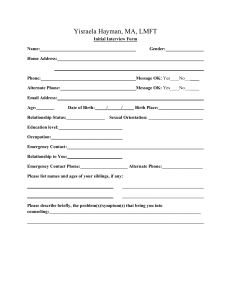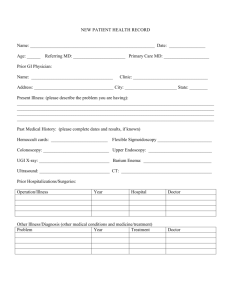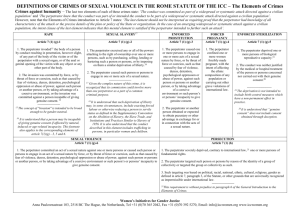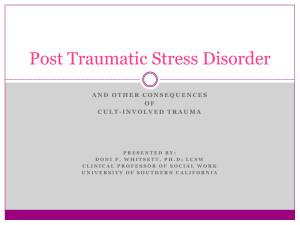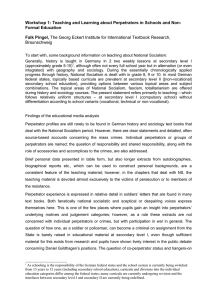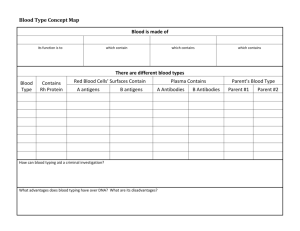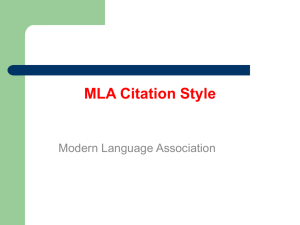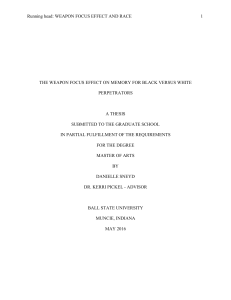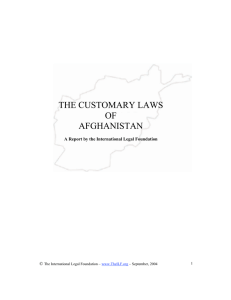Signs and examples (Word, 15KB)
advertisement
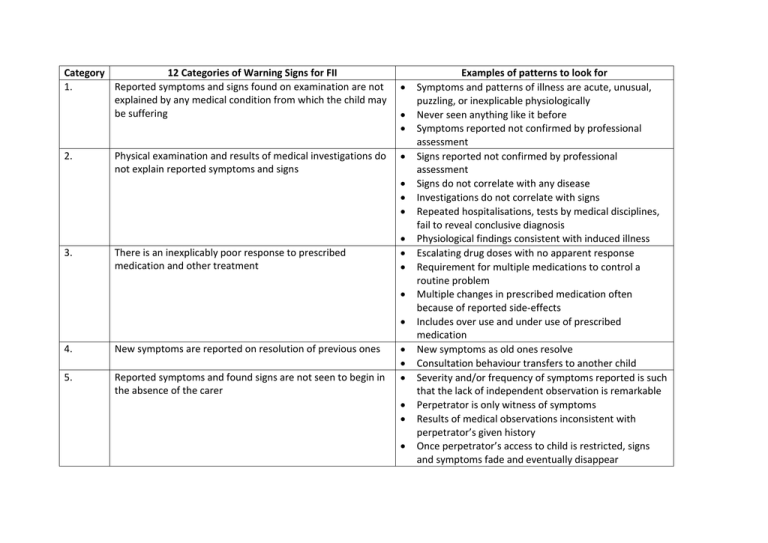
Category 12 Categories of Warning Signs for FII 1. Reported symptoms and signs found on examination are not explained by any medical condition from which the child may be suffering 2. Physical examination and results of medical investigations do not explain reported symptoms and signs 3. There is an inexplicably poor response to prescribed medication and other treatment 4. New symptoms are reported on resolution of previous ones 5. Reported symptoms and found signs are not seen to begin in the absence of the carer Examples of patterns to look for Symptoms and patterns of illness are acute, unusual, puzzling, or inexplicable physiologically Never seen anything like it before Symptoms reported not confirmed by professional assessment Signs reported not confirmed by professional assessment Signs do not correlate with any disease Investigations do not correlate with signs Repeated hospitalisations, tests by medical disciplines, fail to reveal conclusive diagnosis Physiological findings consistent with induced illness Escalating drug doses with no apparent response Requirement for multiple medications to control a routine problem Multiple changes in prescribed medication often because of reported side-effects Includes over use and under use of prescribed medication New symptoms as old ones resolve Consultation behaviour transfers to another child Severity and/or frequency of symptoms reported is such that the lack of independent observation is remarkable Perpetrator is only witness of symptoms Results of medical observations inconsistent with perpetrator’s given history Once perpetrator’s access to child is restricted, signs and symptoms fade and eventually disappear 6. The child’s normal daily life activities are being curtailed beyond that which might be expected for any medical disorder from which the child is known to suffer. 7. Over time the child is repeatedly presented with a range of signs and symptoms History of unexplained illnesses or deaths or multiple surgery in parents or siblings of the family 8. 9. 10. 11. Once the perpetrator’s access to the child is restricted signs and symptoms fade and eventually disappear Exaggerated catastrophes or fabricated bereavements and other extended family problems are reported Incongruity between the seriousness of the story and the actions of the parents Exclusion from PE Exclusion from school Unwarranted and often extreme dietary restrictions Wearing dark glasses Confined to a wheelchair Limiting social contacts Multiple symptoms Multiple doctors Complex medical history in perpetrator Psychiatric problems in perpetrator Multiple illness in siblings Dramatic recoveries in hospital Claiming child has terminal illness when this is not the case Failure to attend for outpatients, investigation or admission inconsistent with serious parental concern Medical concerns at inability to identify cause, not matched by perpetrator Claims a diagnosis has been made but subsequent communication shows it has not Claims advice has been offered when it has not Changing or inconsistent stories 12. Erroneous or misleading information provided by parent

